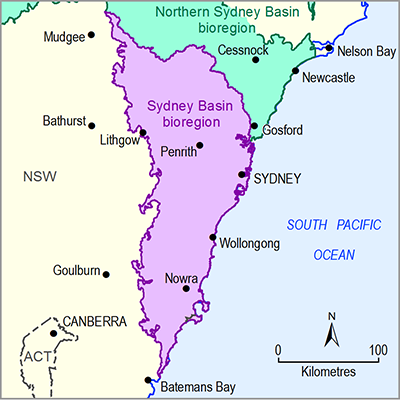- Home
- Assessments
- Bioregional Assessment Program
- Sydney Basin bioregion
- 1.1 Context statement for the Sydney Basin bioregion
- 1.1.6 Surface water – groundwater interactions
- 1.1.6.3 Pumping interactions with upland swamps
Commonwealth of Australia (2014) describes three different peat swamp conceptual models: headwater swamps, valley infill swamps, and hanging swamps (see Section 1.1.7 .3.2). Headwater swamps, which predominate on the Woronora Plateau (Southern Coalfield), are local depressions on eroded ridgelines that have filled with sand and later peat. They are mostly less than 10 ha in area and have a base layer less than 1.5 m thick; some swamps have a thin clay or silt layer directly above Hawkesbury Sandstone bedrock (Tomkins and Humphreys, 2006). Their water regime is dominated by rainfall and surface water runoff, but they can be connected to a shallow, typically ephemeral, perched aquifer. Two long pumping trials on swamps associated with borefields have been conducted to investigate linkages between headwater swamps and the local groundwater system (URS, 2007, 2008; Ross and Carosone, 2009). Results indicated that the perched water levels supporting the swamps were not connected to the underlying groundwater in the sandstone. Due to the characteristic shallow depths of headwater swamps, tilting and cracking of underlying sandstone caused by longwall mining is a threat despite their peat base.
The other two types of peat swamp have a stronger groundwater connection (Commonwealth of Australia, 2014). Valley infill swamps occur in steeper, more incised valleys of second and third order streams. They are recharged by rainfall, runoff and groundwater. Groundwater sources are typically perched, but can sometimes be regional. Swamps with a connection to a regional groundwater system are more likely to be permanently wet. Hanging swamps occur on steep valley sides and cliffs and are more common in the Blue Mountains and on the Newnes Plateau (Western Coalfield), but have also been identified on the Woronora Plateau. They are sustained by groundwater discharge from seepage faces caused by low permeability layers forcing water sideways along cracks and joints. Source aquifers occur within the higher permeability parts of the sandstone beds. Both of these swamp types are expected to be more vulnerable to subsidence than headwater swamps because they occur in steeper terrain. While swamps with at least local groundwater connection have experienced changes in their hydrology due to longwall mining, i.e. valley infill and hanging swamps (Tomkins and Humphreys, 2006; NSWDP Southern Coalfields Inquiry, 2008), no such observations have yet been reported for headwater swamps.

